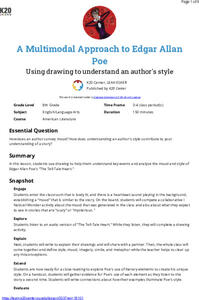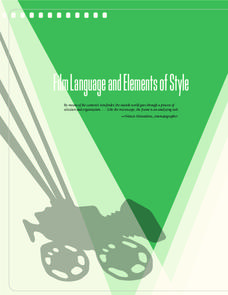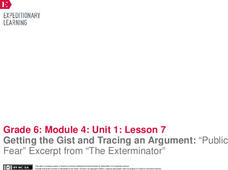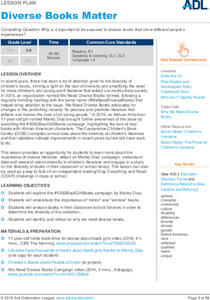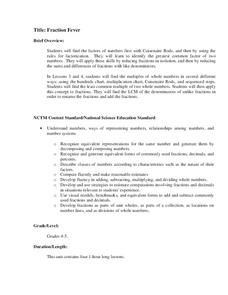Overcoming Obstacles
Identifying Your Learning Style
How many different learning styles are there? Four? Five? Seven? Twelve? It depends on who you ask. But the point of this lesson is that people learn differently, and most have a way or ways that work best for them. To help identify...
Overcoming Obstacles
Learning How You Learn Best
Scholars think of a special place, then represent that place through pictures or written words— a poem, song, or short story. Peers show off their organizational skills by reviewing their binders and notebooks, comparing strategies, and...
Council for the Curriculum, Examinations and Assessment
Learning About Learning
Bloom's Taxonomy and Howard Gardner's Theory of Multiple Intelligences feature largely in a session that asks class members to identify their dominate learning style and intelligence. Furthermore, individuals consider how using...
University of North Carolina
Style
Just like you choose your clothes to ensure they fit the occasion, you should choose your words deliberately while writing. Style, the main topic of one handout in a series on writing skills, involves choosing words carefully and paying...
Transforming Education
SEL for Educators Toolkit
Four resources make up the SEL toolkit for educators. Intended for those that teach kindergarten to twelfth grade, helpful files include a companion guide, presentation, reference list, and a one-page snapshot that neatly showcases the...
Council for the Curriculum, Examinations and Assessment
Learning about Learning
Encourage your sophomores to become life-long learners with the series of activities contained in this packet. Class members set goals, review personal targets, identify strategies to improve their study skills, and develop an...
K20 LEARN
A Multimodal Approach To Edgar Allan Poe Using Drawing To Understand An Author's Style
True! Poe's "The Tell-Tale Heart" makes readers nervous. But how? Young scholars create a drawing while listening to a reading of Poe's eerie tale to understand how writers create the mood of their stories and what their writing style...
Overcoming Obstacles
Preparing for Tests and Exams
Avoid donuts on test days! Teach your classes how to prepare for assessments, ranging from pop quizzes to major exams, with a lesson that helps scholars identify and practice effective test-taking strategies. Participants learn about the...
EduGAINs
Coureurs de Bois, First Nation Peoples, and the Fur Trade
The interactions between the Coureurs de bois (runners of the woods) and the First Nation Peoples as they engaged in the fur trade are the focus on this Canadian history exercise. Kids select learning centers based on their learning...
WE Charity
Exploring the Four Leadership Styles
What is your leadership style? Tweens and teens independently complete a Four Leadership Styles worksheet. Once completed, they use a leadership code to identify their prominent leadership style. Class members gather by style, brainstorm...
Missouri Department of Elementary
Are You Balanced?
Balance scales create a strong visual of how an individual prioritizes one's self alongside their commitments to the community, school, and home. Scholars complete a graphic organizer then discuss their findings with their peers. A...
Film Foundation
Film Language and Elements of Style
How do you read a frame? How do you read a shot? Here's a resource that shows viewers how to read films. As part of the study, class members examine the camera angles, lighting, movement, and cinematic point of view in Mr. Smith Goes to...
Overcoming Obstacles
Managing Stress
The final instructional activity in the High School and Beyond Module focuses on stress management. The big idea here is that situations themselves are not stressful, but how one perceives stress is the issue. With that point in mind,...
Humane Education Advocates Reaching Teachers
Justice for All - Educating Youth for Social Responsibility: Grades K-5
In grades kindergarten through fifth grade, scholars take part in a social-emotional learning unit designed to boost social responsibility. Three hundred pages provide lessons and activities related to everyday classroom practices, the...
K20 LEARN
Words Before Blows: Julius Caesar
Scholars examine how Brutus and Mark Antony employ ethos, pathos, and logos in their speeches to persuade the angry crowd in Act 3, scene 2 of William Shakespeare's tragedy, Julius Caesar. To set the stage, groups first identify the...
Missouri Department of Elementary
Communicating with I-Messages (2/2)
Class members read a handout to learn about using I-Messages—honest statements that begin with I to get their points of view across. Next, learners practice using I-Messages with partners to better communicate without hurting...
Overcoming Obstacles
Respect
A social-emotional instructional activity focuses on respect. Scholars define the term and puzzle out the word. Pupils give examples of respect they observe at home, at school, and in the community. Cards showcase scenarios in that...
EngageNY
Getting the Gist and Tracing an Argument: “Public Fear” Excerpt from “The Exterminator”
Only fear fear itself. Scholars read Public Fear from The Exterminator. Triads work together to annotate and determine the gist of the text. They then complete a Tracing an Argument graphic organizer to identify arguments, claims,...
Anti-Defamation League
Diverse Books Matter
A campaign by Marley Diaz sheds light on the importance of diverse books. Scholars explore the campaign and identify "window" and "mirror" books. They look closely at their library and classroom bookshelves and reflect on why diverse...
National Security Agency
Fraction Fever
This unit on fractions allows for upper-aged elementary learners to explore ways to find the greatest common factor and least common multiple of two numbers. Ultimately, young mathematicians will be able to identify equivalent fractions,...
Lions Clubs International Foundation
I Can Keep Calm
Strong emotions may arise at anytime and any where. This activity boosts self-awareness and management for when young learners require assistance with their feelings. Tips include: remaining calm, breathing, explaining how they feel, and...
Learning for Justice
What is Empathy?
Young scholars examine facial expressions to identify emotions, listen carefully to stories, and choose the appropriate reaction. Partners choose one story to rewrite, showing empathy for others.
Carfleo
Substance Use and Abuse
What is substance abuse? What is the difference between a depressant and a stimulant? Here is a comprehensive unit on drug use, including three lessons with such activities as categorizing and defining key terms, identifying...
Health Smart Virginia
Life Saver
Tweens and teens learn how to be a lifesaver and help a peer who may be struggling with thoughts of suicide. They identify risk factors and warning signs, and strategies to get an individual to seek help.






